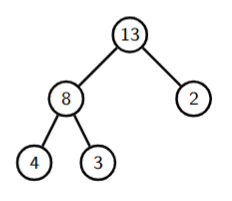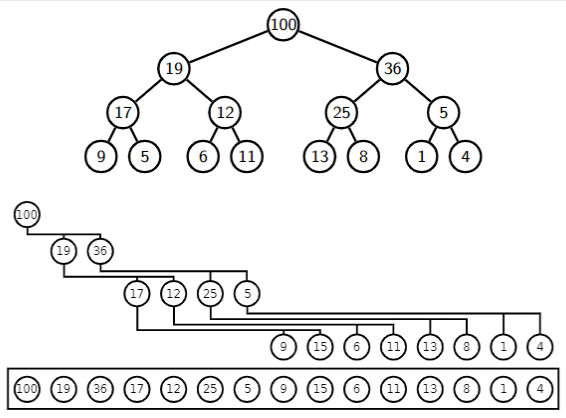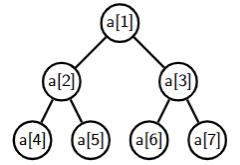Priority Queues
(Max) Priority Queue = Max-In-First-Out

1. Basic Operations
insert(value,priority)deleteMax()update(value,priority)isEmpty()
2. Naïve implementation: Array
Store in an array, ordered by priority (the highest at the end):
insert(value, priority)- find the position where to store the element, shift to the right the elements starting from that position1. deleteMax()- return the last stored element.
3. Better implementation: Binary Heaps
3.1 Definition
Invariants of heap trees are as follows:
- The priority of every node is higher than (or equal to) that of its children.
- All levels are completely filled, except possibly the last one, which is partially filled from the left.

3.2 Insertion
Insert the value at the end of the last level and then keep bubbling it up as long as it is larger than its parent.
Inserting p to a heap which already has n elements stored in it (pseudocode):
1 | void insert(int p, int[] heap, int n){ |
3.3 Delete Max
- Make the last node in the last level the new root.
- Then bubble down: keep swapping it with the higher priority child as long as any of its children has a higher priority.

pseudocode:
1 | int deleteMax(int[] heap, int n){ |
3.4 Storing heap trees in arrays

If we start counting from 1.

or 
For a node stored on position i.
- its left child is on position
2*i. - its right child is on position
2*i + 1. - its parent is on position
i div 2.
3.5 Heapify
Method 1:
Can insert entry by entry and bubble up each time, total
Method 2:
Simply fill the array and bubble down each entry. This is
1 | void heapify(int[] arr, int n){ |